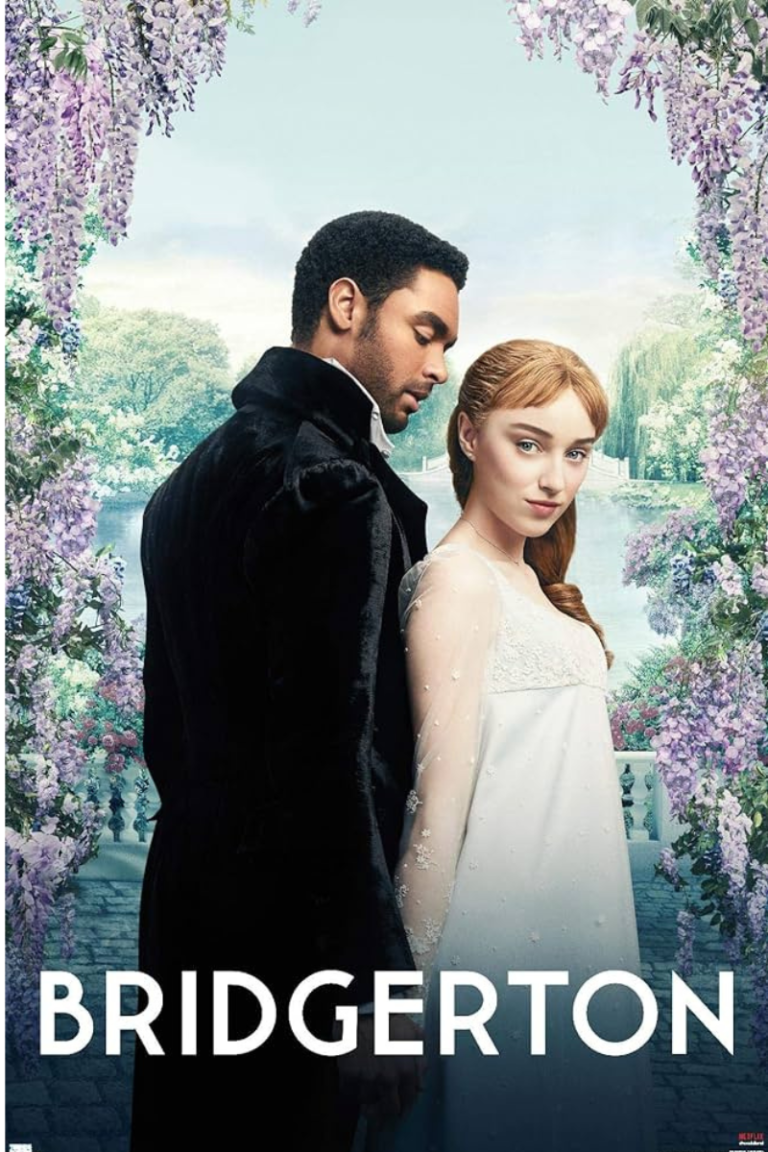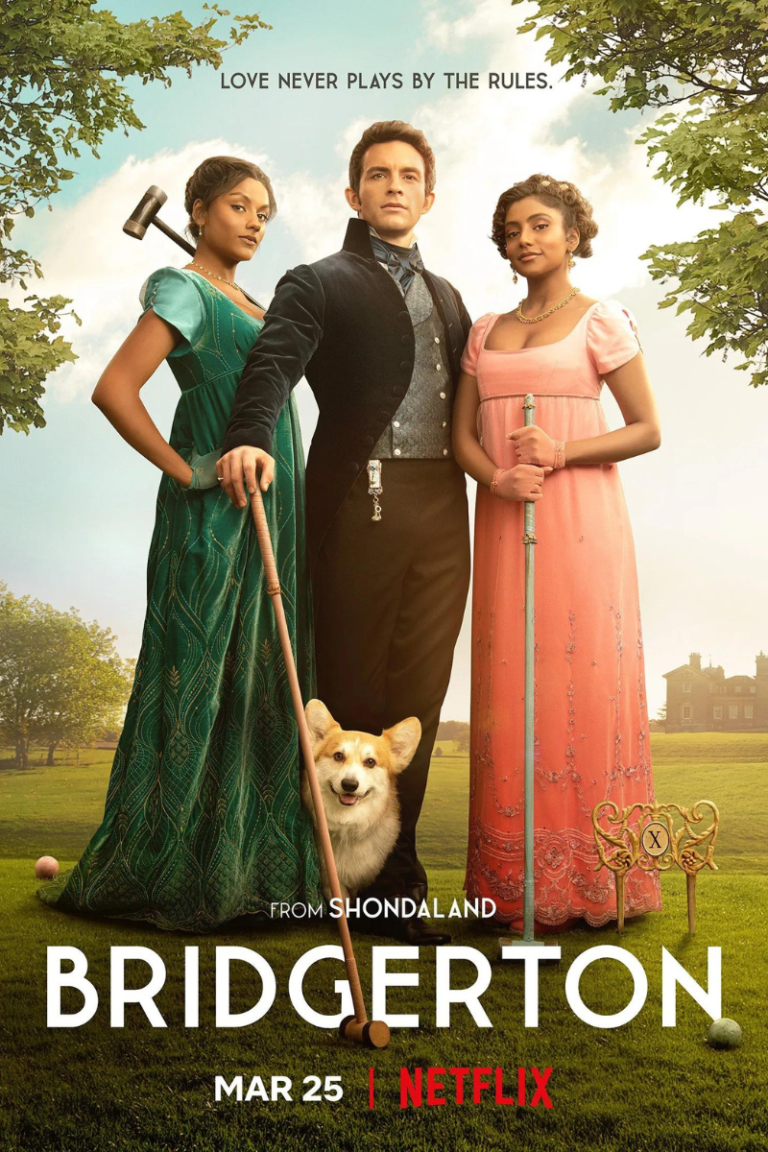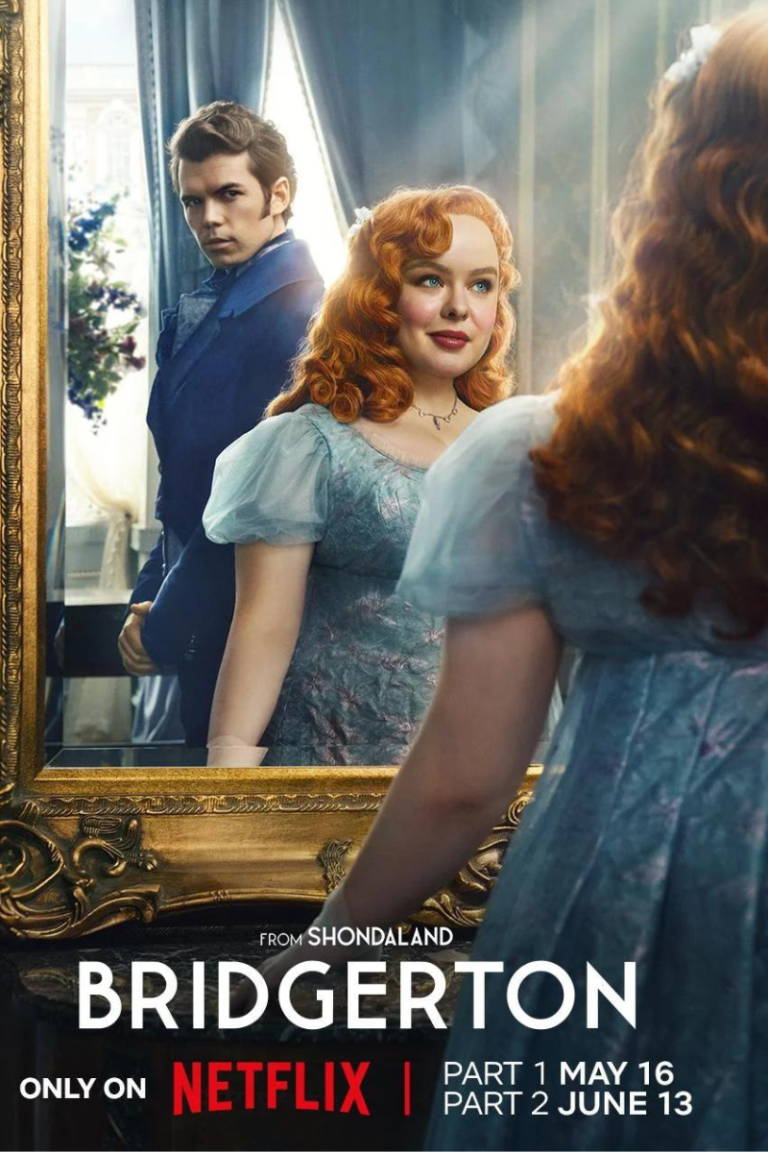In the realm of period dramas, where corsets are tight and scandals run rampant, Netflix’s “Bridgerton” emerges as a glittering gem. Set in the lavish world of Regency-era London, this Netflix series created by Chris Van Dusen, adapted from Julia Quinn’s beloved novels of the same name, has captivated audiences worldwide with its intoxicating blend of romance, intrigue, and scandal. As we delve into the exquisite tapestry woven by “Bridgerton” .
“Bridgerton” transports viewers to early 19th-century England, a world of opulent ballrooms, gossiping aristocrats, and rigid societal norms. At its heart lies the illustrious Bridgerton family, led by the dignified Viscountess Violet Bridgerton, whose mission is to secure advantageous matches for her eight children. Against this backdrop, we witness the whirlwind of romance and drama that unfolds among the aristocracy, guided by the enigmatic gossip columnist, Lady Whistledown whose identity remains mysterious throughout the end of the second season, whose scandalous pamphlets threaten to expose the deepest secrets of London’s elite. Comprising of 2 seasons and 3rd on it’s way in 2024 and a spin-off “Queen Charlotte:A Bridgerton Story”.
SEASON 1

The 1st season focuses on the story of Daphne Bridgerton, the eldest daughter whose quest for love and independence intertwines with the brooding Duke of Hastings, Simon Basset. Their electrifying chemistry sets the stage for a captivating romance fraught with obstacles and passion. The love story is the one filled with thorns and bitter moments as Simon never wants to settle down and marry but Daphne is complete opposite and had been planning her fairy tale and perfect married life since her childhood. But both are captivated by the love for each other and surrender to each other.
SEASON 2

2nd season revolves around the brewing romance between Daphne’s elder brother, Lord Anthony Bridgerton, the Viscount of the family and Miss Kate Sharma whose family was sponsored by the Lady Danbury for the season. Both are polar opposites and Kate’s younger sister was set to marry the Viscount. But as te season progresses the cehmistry between two young minds sets and they lose sense of what’s right or wrong.
SEASON 3

3rd season is of the captivating story of romance between Penolope Featherington, best mate of the 4th Bridgerton child; Eloise, and 3nd eldest son of the Bridgerton family Colin. Hints of tension between were shown from the 1st season itself. Penelope has a crush on Colin and is afraid of confronting the same. But as their story developes, Penelope learns Colin might not reciprocate the same.There is said to be a surprise turn of the stories in the 3rd season as their side of story comes into light.
Beyond the central romance, “Bridgerton” boasts a diverse ensemble cast, each playing their part in the intricate web of societal intrigue. From the mischievous Featheringtons to the formidable Queen Charlotte, every character adds depth and complexity to the narrative, ensuring that no subplot goes unnoticed. The series is a literature masterpiece and represents the Regency Era in it’s truest form.
To opulent costumes to the grandiose sets, every aspect of the show exudes elegance and sophistication, transporting viewers to a bygone era of glamour and romance.and set-ups from the adaptation of today’s genre of songs into periodical melodies used to depicts the emotions of the characters. Reimagined covers of contemporary pop songs by artists like Ariana Grande and Billie Eilish provide a refreshing contrast to the traditional orchestral arrangements, breathing new life into familiar melodies and enhancing the show’s emotional impact. This innovative approach not only appeals to a modern audience but also underscores the timelessness of the themes explored in the series.
The meticulous attention to detail, the beauty of ball rooms and the debutants dances coupled with the vibrant color palette and lavish cinematography, creates a feast for the senses that immerses audiences in the world of Regency London.
At its core, “Bridgerton” explores timeless themes of love, identity, and empowerment against the backdrop of a rigidly hierarchical society. Daphne’s journey from innocence to maturity is emblematic of the struggles faced by women in a patriarchal world, where marriage is both a social necessity and a personal choice. Similarly, Simon grapples with issues of identity and trauma, highlighting the importance of self-acceptance and healing in the pursuit of happiness.
Moreover, “Bridgerton” challenges traditional gender roles and stereotypes, presenting characters who defy societal expectations in their quest for autonomy and fulfillment. Whether it’s Eloise Bridgerton’s disdain for marriage or the LGBTQ+ representation embodied by characters like the Duke’s friend, Lord Granville, the series celebrates diversity and individuality in all its forms.
Since its debut on Netflix, “Bridgerton” has taken the world by storm, captivating audiences of all ages and backgrounds with its irresistible charm and intrigue. Its diverse cast, progressive themes, and captivating storytelling have sparked conversations about representation, gender dynamics, and the enduring appeal of romance in popular culture. Moreover, the show’s seamless blending of historical accuracy with contemporary sensibilities has earned it acclaim from critics and viewers alike, cementing its status as a cultural phenomenon.
Beyond its immediate cultural impact, “Bridgerton” is poised to leave a lasting legacy in the world of television and beyond. As the first project from Shondaland under its groundbreaking partnership with Netflix, the series heralds a new era of diverse storytelling and representation in the streaming landscape. Its success has paved the way for future collaborations between the streaming giant and other prolific creators, signaling a shift towards more inclusive and innovative content.
Moreover, “Bridgerton” has sparked renewed interest in the romance genre, reinvigorating a genre often dismissed as frivolous or formulaic. By infusing the traditional elements of period drama with modern sensibilities and diverse perspectives, the series has demonstrated the enduring appeal of love stories that transcend time and place. In doing so, it has opened doors for other storytellers to explore new narratives and reimagine classic tropes for contemporary audiences.
While “Bridgerton” may be set in a bygone era, its themes resonate deeply with contemporary audiences, offering poignant commentary on issues of class, race, and gender equality. By centering the narratives of characters from diverse backgrounds and challenging the conventions of its genre, the series confronts the legacy of colonialism and patriarchy while advocating for inclusivity and empowerment.
Moreover, “Bridgerton” serves as a timely reminder of the enduring power of storytelling to provoke thought, inspire empathy, and effect social change. In an age marked by political polarization and social unrest, the series offers a welcome escape into a world where love conquers all and where the bonds of family and community transcend societal divisions. In doing so, it encourages viewers to confront their own biases and prejudices while fostering a greater sense of empathy and understanding for others.
In conclusion, “Bridgerton” represents a triumph of storytelling, craftsmanship, and cultural relevance, offering audiences a tantalizing glimpse into a world of romance, intrigue, and adventure.With multiple seasons already in development and plans to expand the universe with spin-offs and companion projects, the world of Regency London is poised to become even more immersive and expansive in the years to come. As we eagerly anticipate the next chapter in the saga of the Bridgerton family, one thing is certain: the allure of “Bridgerton” will continue to captivate and inspire viewers around the world for years to come, leaving an indelible mark on the annals of television history.



